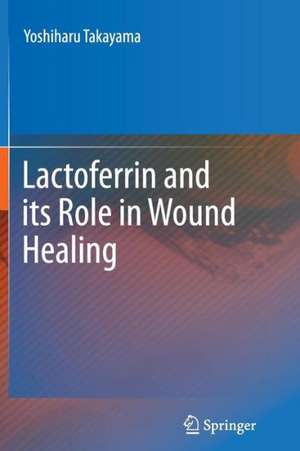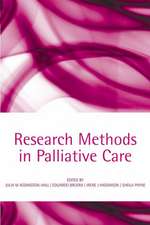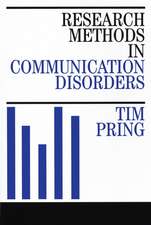Lactoferrin and its Role in Wound Healing
Autor Yoshiharu Takayamaen Limba Engleză Paperback – 29 noi 2013
| Toate formatele și edițiile | Preț | Express |
|---|---|---|
| Paperback (1) | 706.04 lei 6-8 săpt. | |
| SPRINGER NETHERLANDS – 29 noi 2013 | 706.04 lei 6-8 săpt. | |
| Hardback (1) | 711.72 lei 6-8 săpt. | |
| SPRINGER NETHERLANDS – 26 oct 2011 | 711.72 lei 6-8 săpt. |
Preț: 706.04 lei
Preț vechi: 743.20 lei
-5% Nou
Puncte Express: 1059
Preț estimativ în valută:
135.10€ • 147.21$ • 113.84£
135.10€ • 147.21$ • 113.84£
Carte tipărită la comandă
Livrare economică 23 aprilie-07 mai
Preluare comenzi: 021 569.72.76
Specificații
ISBN-13: 9789400792029
ISBN-10: 9400792026
Pagini: 120
Ilustrații: XII, 108 p.
Dimensiuni: 155 x 235 x 6 mm
Greutate: 0.18 kg
Ediția:2012
Editura: SPRINGER NETHERLANDS
Colecția Springer
Locul publicării:Dordrecht, Netherlands
ISBN-10: 9400792026
Pagini: 120
Ilustrații: XII, 108 p.
Dimensiuni: 155 x 235 x 6 mm
Greutate: 0.18 kg
Ediția:2012
Editura: SPRINGER NETHERLANDS
Colecția Springer
Locul publicării:Dordrecht, Netherlands
Public țintă
Professional/practitionerCuprins
1. Molecular regulation of wound healing, - 2. Role of hyaluronan in wound healing, - 3. Lactoferrin structure, function and genetics, - 4. Lactoferrin as a signaling mediator, - 5. Effects of lactoferrin on skin wound healing
Textul de pe ultima copertă
“Lactoferrin and its Role in Wound Healing” summarizes the recent advances of molecular mechanisms of wound healing. It is a complex physiological process that requires the regulation of different types of cells such as immune cells, keratinocytes, fibroblasts, and endothelial cells.
Lactoferrin was first identified as an iron-binding glycoprotein abundantly found in milk. It has been considered to play important roles in host defense, since lactoferrin shows broad spectrum of anti-bacterial and anti-viral activities, arising from its iron-chelating property. Furthermore, lactoferrin can regulate the function of innate and adaptive immune cells and exhibits immuno-modulating properties. These activities of lactoferrin implicate that potential use of lactoferrin as a wound healing agent. In addition, this book shows that lactoferrin is a potent regulator of dermal fibroblasts and epidermal keratinocytes, and promotes skin or corneal epithelial wound healing by increasing their proliferation, migration or deposition of extracellular matrix (ECM) components such as collagen and hyaluronan. This book provides the scientific background on use of lactoferrin as a wound healing agent. Indeed, lactoferrin exerts its biological effects by binding to specific lactoferrin receptors on target cells. This book also covers the in-depth information on roles of lactoferrin as a signaling molecule.
Lactoferrin was first identified as an iron-binding glycoprotein abundantly found in milk. It has been considered to play important roles in host defense, since lactoferrin shows broad spectrum of anti-bacterial and anti-viral activities, arising from its iron-chelating property. Furthermore, lactoferrin can regulate the function of innate and adaptive immune cells and exhibits immuno-modulating properties. These activities of lactoferrin implicate that potential use of lactoferrin as a wound healing agent. In addition, this book shows that lactoferrin is a potent regulator of dermal fibroblasts and epidermal keratinocytes, and promotes skin or corneal epithelial wound healing by increasing their proliferation, migration or deposition of extracellular matrix (ECM) components such as collagen and hyaluronan. This book provides the scientific background on use of lactoferrin as a wound healing agent. Indeed, lactoferrin exerts its biological effects by binding to specific lactoferrin receptors on target cells. This book also covers the in-depth information on roles of lactoferrin as a signaling molecule.
Caracteristici
Provides the recent advances in molecular mechanisms of wound healing Provides in-depth information on roles of lactoferrin as a signaling molecule Presents the scientific background on use of lactoferrin as a wound healing agent













